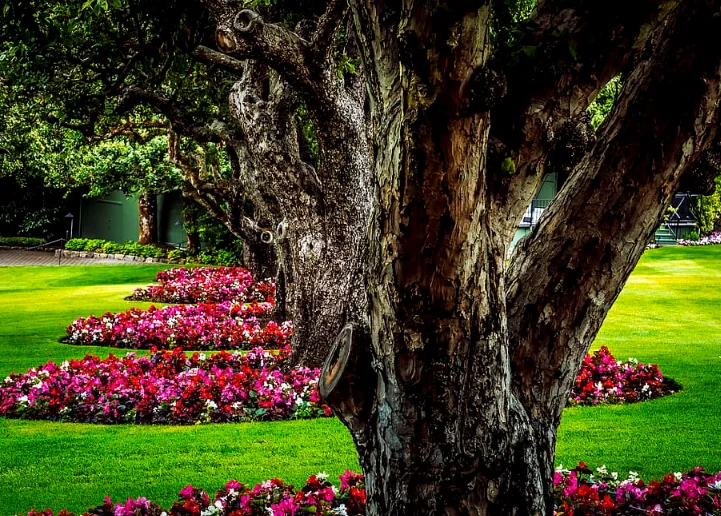In today’s fast-paced world, where technology constantly evolves and lifestyles adapt, the concept of the modern home has undergone a significant transformation. It’s not just about the interior anymore; the exterior spaces, particularly landscaping, have become equally important. As homeowners seek to create functional and aesthetically pleasing outdoor areas, contemporary landscaping trends have emerged, blending innovation with sustainability and style. Let’s delve into some of the key landscaping trends for the modern home.

Minimalistic Design
Minimalism is a hallmark of contemporary landscaping. Clean lines, simple shapes, and a focus on essential elements define this trend. In a minimalist landscape, less is more. Instead of overcrowding the space with numerous plants and features, emphasis is placed on carefully selected elements that contribute to a sense of openness and tranquility. Incorporating geometric shapes, such as rectangular plant beds or square pavers, can further enhance the modern aesthetic.
Sustainable Practices
With increasing awareness of environmental issues, sustainability has become a central focus in landscaping design. Modern homeowners are embracing eco-friendly practices such as xeriscaping, rainwater harvesting, and native plant gardening. Xeriscaping, in particular, involves designing landscapes that require minimal water, reducing the need for irrigation and promoting water conservation. By selecting drought-tolerant plants and implementing efficient irrigation systems, homeowners can create beautiful landscapes that are both environmentally responsible and visually appealing.
Outdoor Living Spaces
The boundary between indoor and outdoor living spaces continues to blur, with more homeowners seeking to extend their living areas into the outdoors. Contemporary landscaping trends emphasize the creation of functional outdoor living spaces that serve as extensions of the home. This may include features such as outdoor kitchens, dining areas, lounges, and fire pits, designed to facilitate relaxation, entertainment, and social gatherings. Integrating comfortable seating, ambient lighting, and durable materials allows homeowners to enjoy their outdoor spaces year-round.
Vertical Gardens and Green Walls
In urban environments where space is limited, vertical gardens and green walls offer an innovative solution to incorporating greenery into modern landscapes. These vertical plantings not only maximize space but also provide numerous benefits such as improved air quality, noise reduction, and insulation. From simple trellises adorned with climbing vines to elaborate modular systems featuring a variety of plant species, vertical gardens add a dynamic element to contemporary outdoor spaces, blurring the lines between architecture and nature.
Smart Landscaping Technology
Just as smart technology has revolutionized the way we interact with our homes, it is also transforming the landscape industry. From automated irrigation systems and weather-responsive controllers to smartphone-controlled outdoor lighting and robotic lawn mowers, advancements in technology are making it easier than ever to maintain a beautiful landscape. Smart landscaping technology not only enhances convenience and efficiency but also promotes water conservation and sustainability by optimizing resource usage.
Multifunctional Design
In modern landscaping, versatility and functionality are key considerations. Homeowners are increasingly opting for multifunctional outdoor spaces that serve multiple purposes throughout the day. For example, a patio might double as a yoga studio in the morning and a dining area in the evening, while a fire pit can provide warmth and ambiance for outdoor gatherings during cooler months. By maximizing the utility of outdoor spaces, homeowners can make the most of their investment while enjoying greater flexibility in how they use their landscapes.
Artificial Intelligence and Robotics
The integration of artificial intelligence (AI) and robotics is revolutionizing the landscape industry, offering innovative solutions for tasks such as mowing, weeding, and plant care. AI-powered gardening tools equipped with sensors and cameras can analyze soil conditions, monitor plant health, and automate maintenance tasks, reducing the need for manual labor and increasing efficiency. With advancements in AI and robotics, the future of landscaping holds exciting possibilities for creating sustainable, low-maintenance outdoor environments.
In conclusion, contemporary landscaping trends for the modern home reflect a fusion of innovation, sustainability, and style. From minimalist design principles to sustainable practices and cutting-edge technology, today’s landscapes are evolving to meet the needs and preferences of homeowners in the 21st century. By embracing these trends and incorporating them into their outdoor spaces, homeowners can create landscapes that are not only beautiful and functional but also environmentally responsible and future-proof.




